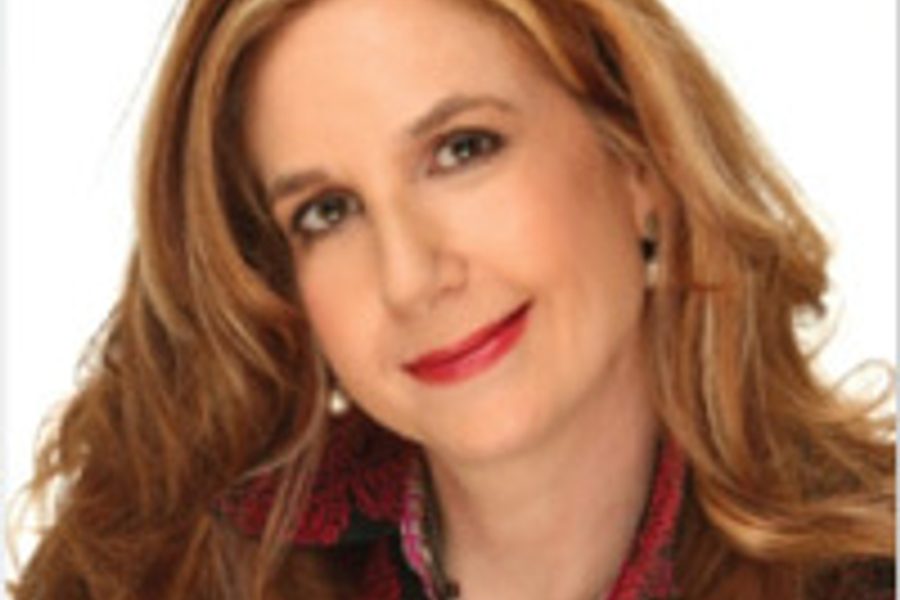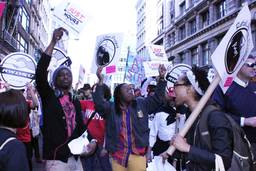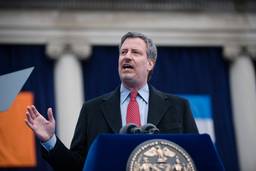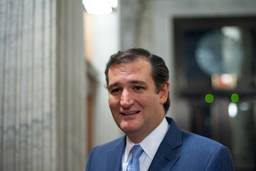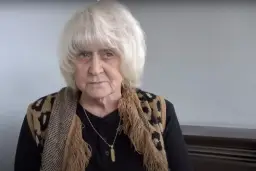Anyone with even a passing interest in progressive politics knows the labor movement is in trouble. Millions of lay-offs during the Great Recession have pushed down already low U.S. unionization rates, and even more troubling, a national poll conducted in February found that only 41 percent of Americans now view unions favorably — that’s a 17-percentage point decline in just two years.
What should be done to revive the fortunes of the labor movement — and American workers? Amy Dean’s new book A New New Deal: How Regional Activism Will Reshape the American Labor Movement, which she co-authored with David Reynolds of Wayne State University, offers a clear prescription for building progressive change from the grassroots: Labor organizations must transcend workplaces to make common cause with community organizations at the local and regional levels.
Drawing on her decade of experience leading the AFL-CIO in California’s Silicon Valley — where she helped pass the Children’s Health Initiative, which made Santa Clara the first county in America to offer health insurance to all children — Dean argues that unions and other groups can make change together if they build the “three legs of regional power building”: a policy agenda, “deep coalitions,” and aggressive political action. “The ability to collaborate and create relationships and alliances is greater at the local level than it is federally,” says Dean, who now lives in Chicago, where she began her career in labor working for the Ladies Garment Workers Union during the 1980s.
In These Times sat down with Dean in the magazine’s Chicago office to talk about her new book, activists who deserve fame, and why the proposed Employee Free Choice Act, which would make workplace organizing easier, isn’t all it’s cracked up to be. (Videos of Dean at bottom.)
—Jeremy Gantz
Given unions’ struggles to retain members and dues, how can we expect them to get along in coalitions as you hope they do?
I have two answers to that. First and foremost, we’re going to see a lot more of AFL-CIO and Change to Win on the same platform. It’s a reflection of the fact that [President] Rich Trumka has a vision for the AFL-CIO that’s progressive. It was the AFL-CIO under Trumka’s leadership that put the issue of public option back on the table within the labor movement. So one, I want to acknowledge that. And two, I want to acknowledge that he was very vocal about this whole question of banking regulation and retiring debt.
So having said that, what’s the implication of the split? On the work that we talk about in A New New Deal, not much. Evidence? Well, in 2005 the AFL-CIO split and nobody at the local and state level seemed to notice. And if you look all across the country, region by region, state by state, local and state labor movements remain together. They didn’t split. Obviously that says there’s mutual benefit and mutual need being addressed at the local and state level, because nobody fled. [Former AFL-CIO President] John Sweeney created a technical vehicle for that to happen. He created something called solidarity charters, and that simply allowed unions that became unaffiliated as a function of international separating from the federation of labor nationally, to continue to belong at the state and local level, in spite of the international decision and movement.
How can we expect unions to in a sense delay their own self-interest by not focusing intensely on increasing membership right now? How can labor not only worry about “density” these days?
Renewing labor’s fortunes will not come about because of any one strategy. I’m always nervous when anybody comes along and says we have “the” strategy for building the house of labor. So what I’ve long argued and long practiced is that it’s a range of strategies that are necessary to rebuild labor’s fortunes. Certainly, at no place or time in A New New Deal do we argue that labor should ever distract itself from rebuilding its presence in the workplace.
But we do say that in addition to being workplace-based, labor organizations must pay attention to their role in the community. And that labor should be as much a community-based organization as it is a workplace-based one. The business community certainly talks about a range of strategies it needs to engage to dominate market share. All we argue for in ANND is that labor should be woven into the civic fabric of local communities – as much as the local Chamber of Commerces are, as much as the national manufacturing association affiliates are, and as much as other entities of organized business are.
What does that mean exactly? It means that on any given day of the week, hundreds of economic development decisions are made by regional governments, transportation agencies, municipal and county governments, and they make decisions on every given day of the week that have dramatic impact on working people. They impact our quality of life, they impact what kinds of jobs will be attracted or retained in our community. Those decisions impact the extent to which real affordable housing will be developed, whether transportation initiatives will really move people who need it to and from their jobs.
And so all we argue is: Shame on the labor movement for not being a major player on behalf of working families around those questions.
So labor should make its presence felt in both ways, both in the workplace and in the community.
Yes. Can labor organize workers and workplaces and be an asset to the community? Absolutely. You have international unions and local affiliates whose job is to do one thing, and then you have these federated bodies of labor whose job is to do another. And the business community doesn’t seem to have a problem with this notion, right? So why wouldn’t we use this massive infrastructure that exists in every community and in every state to represent collectively the interests of working people?
Politics
What’s a good example of a regional-minded labor campaign in America right now?
Community Labor United, in Boston, is a good example. It’s an example of labor that for the most part is a traditional labor movement in the city of Boston, not unlike what we have here in Chicago. They have been working to create a working-partnership style think-act tank much in the way that we talk about our work in California. The group grew out of the Boston Federation of Labor. And they’ve been doing deep coalition-building work and they’ve had some very exciting victories.
[Last fall], they won a victory for resources from the state government to be able to go door-to-door to identify based on statewide data the homes that have the greatest needs for weatherization and for energy conservation. They have the capacity now to group together these homes in bulk numbers. They won a victory to actually fund the weatherization and energy conservation in these most needed homes. And they were able to ensure that union contractors get the jobs employing local people.
What’s interesting about the victory is, not only does it address a real need – we’re all certainly hopeful that this new green economy is something that will create jobs that have benefits and standards for people – but look of the range of interests whose needs get satisfied. Immigrant organizations and community groups, which by the way have a significant base in communities of color, and unions.
How was Community Labor United’s success possible?
First of all, the groups whose needs got satisfied are groups that have been working together from the inception of this organization. In other words, when they built Community Labor United they said, what are the kinds of interests that we want to unify? And rather than wait when we each need one another, let’s invest in the long-term process to get to know one another and let’s build an organization together where we share governance.
The second thing is that they invested in building a strong research and policy capacity in their organization. And so they were able to look at the way in which state government was spending its weatherization and climate control or energy efficiency money, and they were able to document that it wasn’t really yielding a net conservation of fossil fuels. And they could marry that to their capacity to develop policy, to have a plan for being able to meet this state mandate.
So it mirrors what you talk about in A New New Deal.
It’s exactly what we talk about in the book, that the next generation of social-change organizations, as we document in our book, are being successful because they have a series of common elements that they’re stitching together under one roof. Deep collaboration and coalition between labor and community organizations, mixed with policy and research capacities, so that as social change groups we’re not just simply responding, but we have real proposals to put forth.
In addition to that, we’re taking those ideas and we’re linking them to politics and political action. And we’re saying, before we elect people to public office, here’s our agenda and here are the things that we expect once you get there. Since the 1990s, there’s a range of work that’s starting to happen in communities across the country where the seeds of social and political innovation are being planted. We’ve identified a range of common elements that exist in these organizations. That’s what we call the three legs to the stool of regional power building: deep coalition building, policy and research, aggressive political action.
Was last October’s “Showdown in Chicago“ a good example of the sort of coalition-minded activism you talk about in the book?
It’s a very important expression of the values we describe in the book. It exemplifies the kinds of alliances that are necessary to mean real power. In other words, if we really want to contest real power in America. Electing a progressive president, electing a liberal Congress, does not equal fundamental reform. All sorts of other things have to take place.
We can’t just be excited by people in office and personalities in office, but it does create an opening and a window for reform. I think those who are most disappointed with the president in the first year of his leadership are disappointed because they don’t see their issues being addressed. Well, there’s been 30 years of neglect in America and in order for those issues to be addressed, it’s going to be the loudest voices that come to the top, that are going to force the hand of legislators to address them.
Culture
How do you think unions can do a better job of appealing to younger workers and workers who have never been in a union before? How can they bring people into the fold and activate their future?
The way to answer that question is by asking another question: What part of conventional trade unionism remains relevant today and what part doesn’t? There’s a lot of polling that says overwhelmingly Americans understand that their conditions at work can be improved if they come together, as opposed to going it alone. On the one hand, we have all this public opinion that the majority of people inherently in America understand and embrace the logic of collective action. And that’s not surprising, because if you work in a factory and punch a time clock and are part of the last few living manufacturing jobs in America, whether you go to work as an independent contractor reporting on progressive America, whether you go to work differently than you did before – you work differently today than people worked before.
We all still have a collective interest in improving our wages, our benefits, and our say over our work conditions. So that part of trade unionism will always remain relevant. What’s probably not relevant today is that most unions have benefit structures that assume an employee will remain in a relationship with their employer for their lifetime. And so many of the benefit structures really aren’t relevant for the ways in which people go to work today.
Another thing that’s probably not relevant anymore and won’t get addressed with the Employee Free Choice Act (EFCA) is that the types of communities of interest that are allowed to form for purposes of bargaining with their employer to improve wages and conditions really need to be updated. The National Labor Relations Act – which was written in the 1930s and is the major body of law that regulates behavior between employees and employers – assumes that individuals and employees are housed together under one roof. The fact is people don’t work like that anymore.
We have to update America’s labor laws so that they conform with the ways in which people work today. The challenge with the labor movement’s massive investment in EFCA is that while it will help to make it easier for folks to bring unions into the workplace, it won’t redefine who’s eligible to be organized into unions. Conventional trade unionism is incredibly relevant given that we all are rational beings and we want to do better with our job and our benefits, we want to earn more, we want to have more quality of life. The problem is that we’re not eligible in many workplaces. So EFCA will on the one hand help, but it won’t get at some of these core foundational reforms that are so necessary.
So even it became law, EFCA would still operate within that outdated set of rules.
Right. The crucial thing is, what do we do to be more relevant to young people, what do we do to be more relevant to workers in the new economy? Well, certainly beyond just waiting for legal reform, we could be doing the things that we talk about in ANND, which is demonstrating that we are powerful community advocates for public policy that make a difference in people’s lives. I think we will ultimately have social upsurge in America, a social reawakening in America, but in the absence of new forms of unions, it will be very difficult to capture people.
In the book, you say that the labor movement shouldn’t rely on “free market unionism.” Could you talk a little bit about what you mean by that?
“Free market unionism” is a term, I think Jeffrey Grabelsky of Cornell University coined. What he refers to is that we let unions organize who they want, and hope that somehow the labor movement will grow and prosper. That we sort of have to let each union go it alone and wait for the various unions that claim jurisdiction over certain sectors of the economy based on workers they represent.
If we don’t have an overarching coordinating strategy and we just yield to the individual unions and we leave these collective bodies off to the frontlines of rebuilding the American labor movement, it’s not likely we’ll have a coordinated strategy that builds power.
Politics
You write that the current healthcare crisis is a clear example of how collective bargaining isn’t enough to empower working people. Where does collective bargaining fit into an overall strategy around democratizing the economy and improving working conditions?
Collective bargaining is an important strategy for increasing conditions for employees and communities. It’s certainly the core and bread and butter of American trade and unionism. Collective bargaining is one of the many range of strategies that we have to employ to improve people conditions. The argument in ANND, and I think this goes back to the old deal, was that bargaining was a core component of the old deal, but that there was also a very broad safety net that worked alongside of collective bargaining.
Here’s how it worked: anytime employees got [laid off], they were caught by the social safety net. They didn’t hit rock bottom. When the economy did turn and became more stable, people went back to work without losing their home and without completely losing everything. Now we have way more volatility in the economy, we don’t have markets that are insulated, we have no social safety net to catch people when they get disconnected from employment.
So yes, collective bargaining is important, but we also have to pay attention to the other kinds of wage supports people need. Will we likely have a comprehensive safety social net in America? I don’t know if we will again. I do know things like transportation, housing, land use and many of those decisions are made locally and statewide with federal frameworks that set the tone, but those decisions are made locally and statewide. We have to see those issues as wage-support issues. They can’t be seen as disconnected from our concern. So labor shouldn’t abandon its commitment to collective bargaining, but it also shouldn’t walk away from the other kinds of things people need if it’s willing to be an institution people are willing to look to in order to solve social problems.
In California in the 1990s, you helped to create the Children’s Health Initiative in Silicon Valley to provide healthcare for children. Do you think that regional experimentation might be a way that healthcare reform continues to evolve, and is eventually made national?
Here’s what I think: There’s going to be a lot of federal frameworks that are going to get creative around legislation in the next several years. We know that after healthcare, there’s going to be a bill that’s already being debated in Congress about climate change. While no one would argue the federal government shouldn’t create the framework for reform, the implementation and innovation…will take place in the states and regional level. That’s why we argue for strong smart infrastructure on the state and local level to realize the objectives of a true progressive America.
In San Jose, the initiative created a public option, which is now almost ten years old. We’ve had every single evaluation possible — you don’t get big foundation money without being evaluated by outside evaluators — to demonstrate we had a success.
So the example here speaks to two things. One, that we can solve really big problems at the regional level. Two, we can create innovation regionally. The ability to collaborate and create relationships and alliances is probably greater at a local level than federally. I said two things, but it’s really about three things. The third thing is we can create programs that can be replicated in other parts of the country.
Personal
What’s one piece of legislation you would like to see passed right now?
I think the most important thing the progressives need to figure out is tax and fiscal reform. It’s really hard to talk about much reform in the absence of rebuilding government’s role. The things Republicans have been so successful about is their ability to be successful in starving the beast. For 30 years these guys said we’re going to eliminate the governments role other than wars and financing the interests of our private friends… So to now expect we are going to have all these huge public resources to fulfill social need — it’s not going to happen. State budgets are hemorrhaging all over the country, stimulus money was used to prop up those governments. So if we are going to create prosperity again, we have to have tax and fiscal reform so that the public sector has resources so it could do it’s job.
The second thing is we have to make collective bargaining available to every single worker. People have to have the right and freedom to bargain collectively with their employer. [The ability to] do so would increase wages, benefits and conditions at work.
Can you highlight a project or organization that is doing really great work right now?
Community Labor United, around their green jobs campaign. It gives definition to what it really means to create a green job. And these guys are so humble and so non-assuming, yet they’re doing amazing stuff.
Who would you say is your favorite elected leader, past or present, and why?
One of my favorite elected leaders is Mike Honda, a congressman in California. I would do anything for this guy: He takes chances, he takes risk. He always sticks to his progressive values. Even when he is a minority, he never sways from his values. I would also say Hilda Solis [the former California congresswoman who now heads the labor department]. If we had more Hilda Solises and Mike Hondas, the world would be a better place.
Who deserves to be a lot more famous than what they are?
Anthony Thigpenn in California, he runs an organization in California called SCOPE [Strategic Concepts in Organizing and Policy Education]. He’s really an organizer. He ran the field campaign for Antonio Veragosa. He’s been doing a lot of community organizing and environmental justice, and has worked to build alliances with labor and community organizations. [Editor’s note: In 2006, SCOPE convened the Los Angeles Apollo Alliance, which aims to connect low-income communities to the “emerging green economy.”]
Often times community organizations don’t see the value in doing electoral work, which I think is an unfortunate remnant of the [Saul] Alinsky era. He has the kind of discipline and big picture view and humility that we need a whole lot more of. The ability to put immediate institutional interests aside and keep collaborations together and think long-term. Anthony Thigpenn should be more famous than he is.
This interview was edited for clarity and concision.
VIDEOS:
—March 26, 2010
